Original Item: Only One Available. Here we have a fantastic Imperial German Hussars Officer's Busby or Pelzmütze (Fur Cap) from the Husaren-Regt. Kaiser Nikolaus II von Rußland (1.Westfälisches) Nr.8. This wonderful imperial German busby came to us from the American Armoured Foundation, Inc. Tank and Ordnance Memorial Museum. The AAF Tank Museum was a living memorial dedicated to the Tank and Cavalry soldiers of the world. Before 1981 some of the artifacts that make up the AAF Tank Museum was a private collection belonging to Mr. William Gasser. Mr. Gasser felt that his collection would be beneficial in educating present and future generations to the sacrifices made and the technologies gained during war. Therefore, in 1981 the AAF Tank Museum was established as a non-profit charitable organization, and Mr. Gasser's donated his private collection to the Tank Museum. Mr. Gasser is still active as Volunteer Director and Curator of the Tank Museum and his knowledge of military history has been a great asset to the museum. Unfortunately after 20 years of operation it had to close its doors, which is when this busby was acquired.
German Hussar Officers’ busbies are among the most elegant and beautiful Imperial German headdresses made during the 50 or so years of the Empire. Busby is of course the English name for the Hungarian prémes csákó ("fur shako") or kucsma, a military head-dress made of fur, originally worn by Hungarian hussars. In its original Hungarian form the busby was a cylindrical fur cap, having a bag of colored cloth hanging from the top. The end of this bag was attached to the right shoulder as a defense against sabre cuts.
After this time the size and design were scaled down, and they became much more for looks than for actual protection. This example is very similar to the British Busby used by Hussars, but is definitely German. The exterior bearskin wrap is in excellent condition and shows only minor fur loss and age related discoloration. On the front is a silver bandeau helmet plate with the Prussian Motto MIT GOTT FÜR KÖNIG UND VATERLAND (With God for King and Country, i.e. Prussia) on it. Slipped in behind the wappen is the officer’s feldzeichen (field badge) cockade, constructed of silver bullion with a black velvet center that denoted the Kingdom of Prussia.
The busby comes complete with its brass scaled chinstrap, indicating officer issue, still attached to the side lugs. It still retains the black leather chin strap extension for actual use. There is a German National Colors (red white and black) Kokarden (cockades) around the right side chin strap lug. In 1897 the new Reichs-Kokarde in Red-White-Black was introduced for all ranks to commemorate the 100th anniversary of the birth of Kaiser Wilhelm 1st. The Reichs-Kokarde was to be worn on the right side of headwear, around the chinstrap lug. As the busby and Tschako have the state cockade on the top of the helmet, they did not have to move it from the right to left lug.
A mittelblau (light blue) kolpak bag covers the busby’s top (it is removable) and hangs down over its left side. The kolpak’s color and the silver-toned wappen enable us to identify it as an officer’s busby from the 8th (1st Westphalian) Hussars "Emperor Nicholas II of Russia" Regiment designated in German as the Husaren-Regt. Kaiser Nikolaus II von Rußland (1.Westfälisches) Nr.8. The busby’s Fangschnur (securing cord) is the correct officer type, and hangs down from the back, being secured by the correct bullion toggle. They were primarily for decoration, although the cap lines could be loosened and attached to the wearer’s Attila tunic to prevent the busby from flying off his head while his horse was at a gallop.
The busby’s interior is every bit as impressive as its exterior. It boasts a very handsome white leather sweatband that shows little evidence of wear or staining. The liner is typical for that found in officer-style busbies. It actually consists of two pieces of white silk fabric. The first section lines the roof of the interior, while a lower section of gathered fabric extends up several inches from behind the sweatband to a cutout center that allows the wearer’s head to poke through. In this case, the top lining has the name Jaffe embroidered in blue on a silk band running left to right, while the rest of the crown lining is "waffle" pattern cotton. The internal structure of the busby is solid, and the helmet does not show any deformation. Overall condition is very good, showing only light use and there is only just a bit of mothing on the underside of the kolpak.
Extraordinary that before 1914 Cavalrymen actually wore these into battle but by 1918 every soldier had been issued with a STEEL HELMET and horses were largely made redundant with the use of Motor Transport. Representing the very last of the "Pomp and Circumstance" of Military uniforms, this still conveys a sense of Romance. Ready to display!




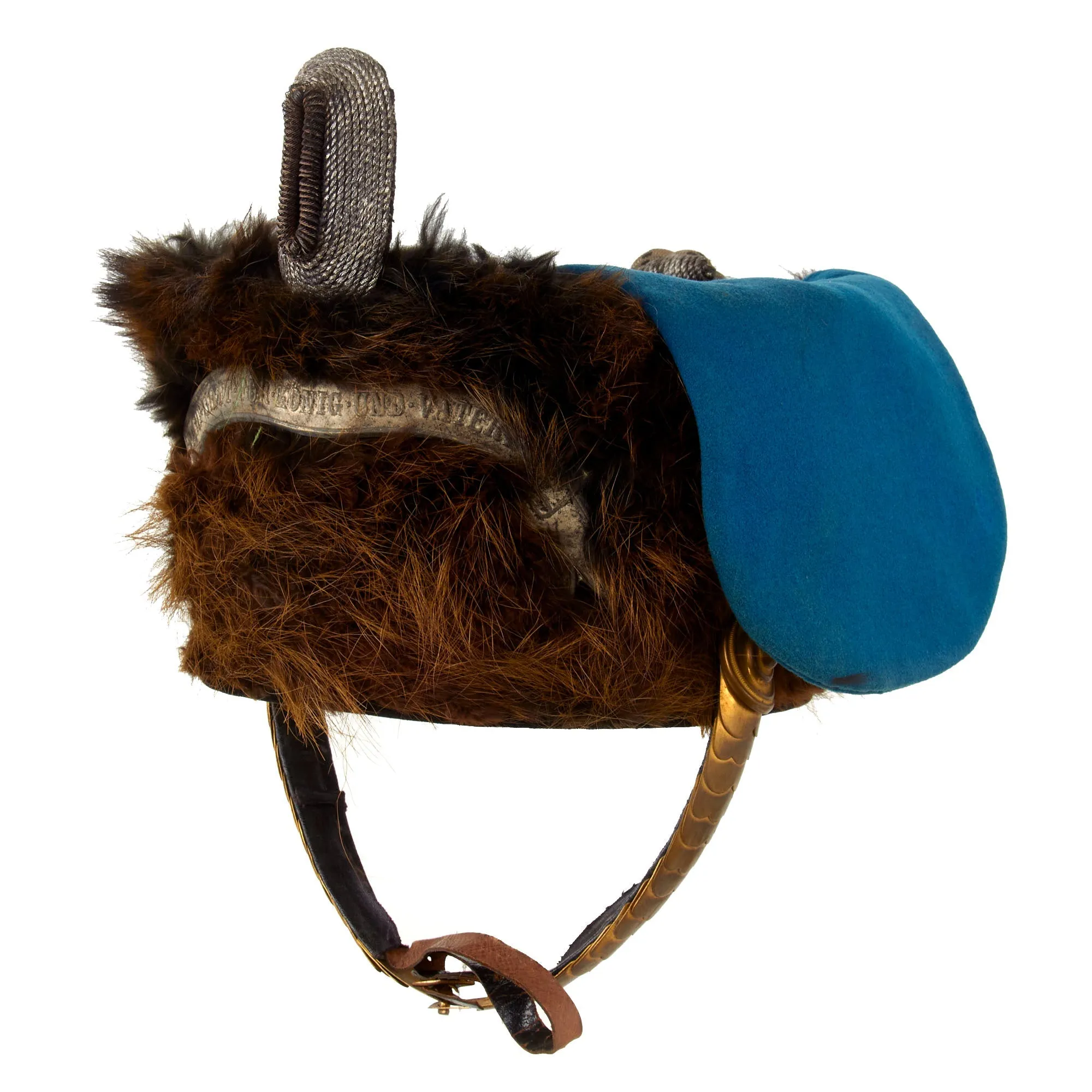


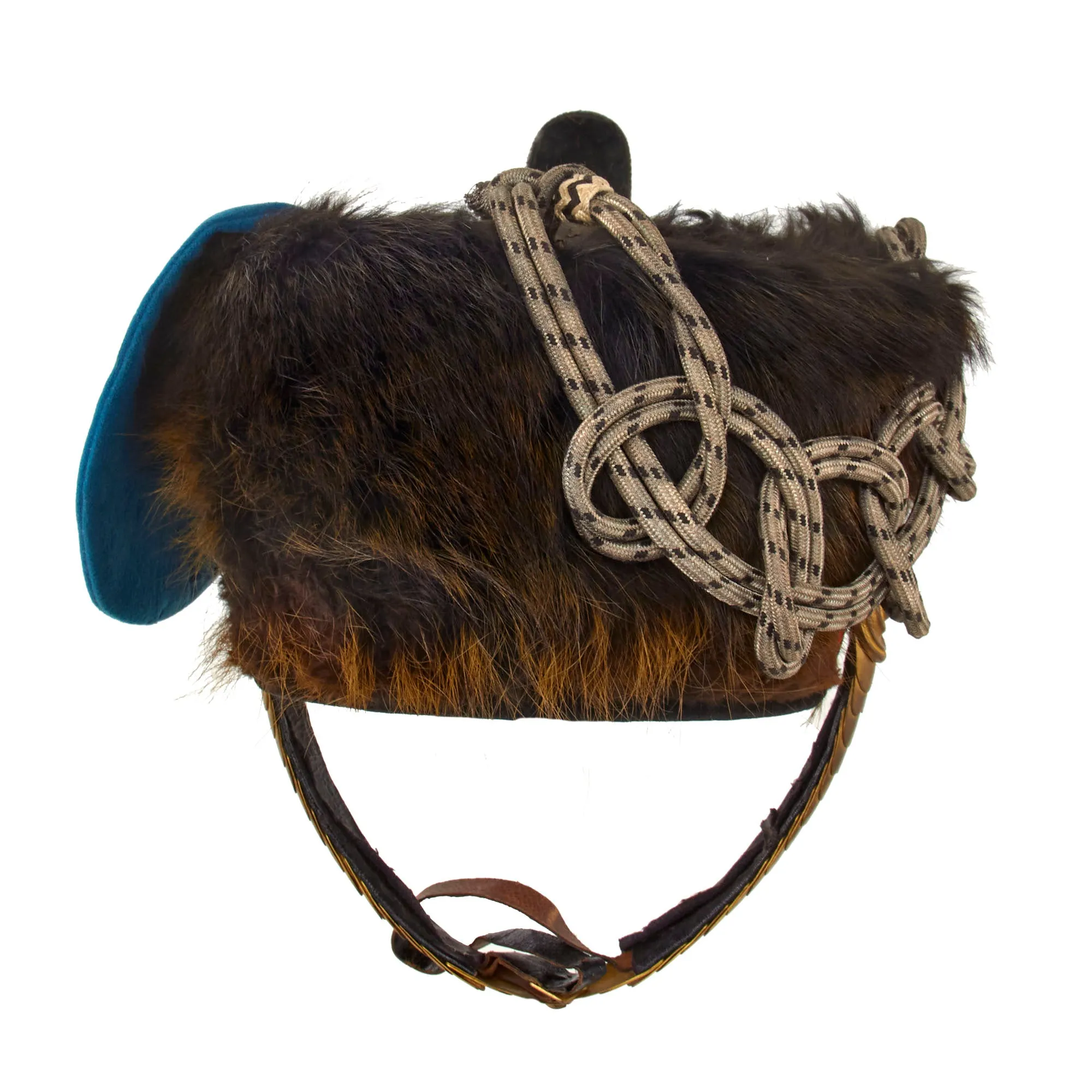
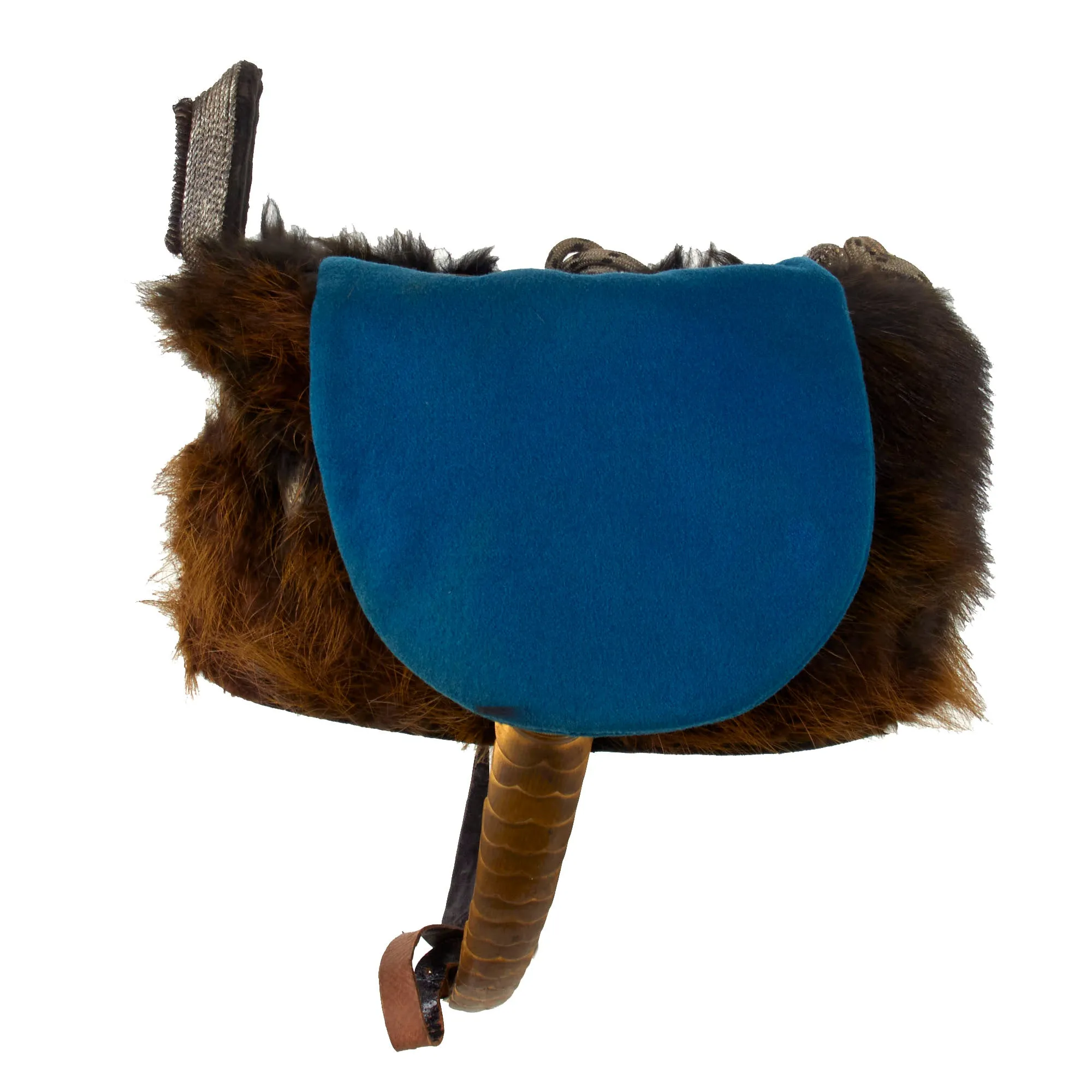
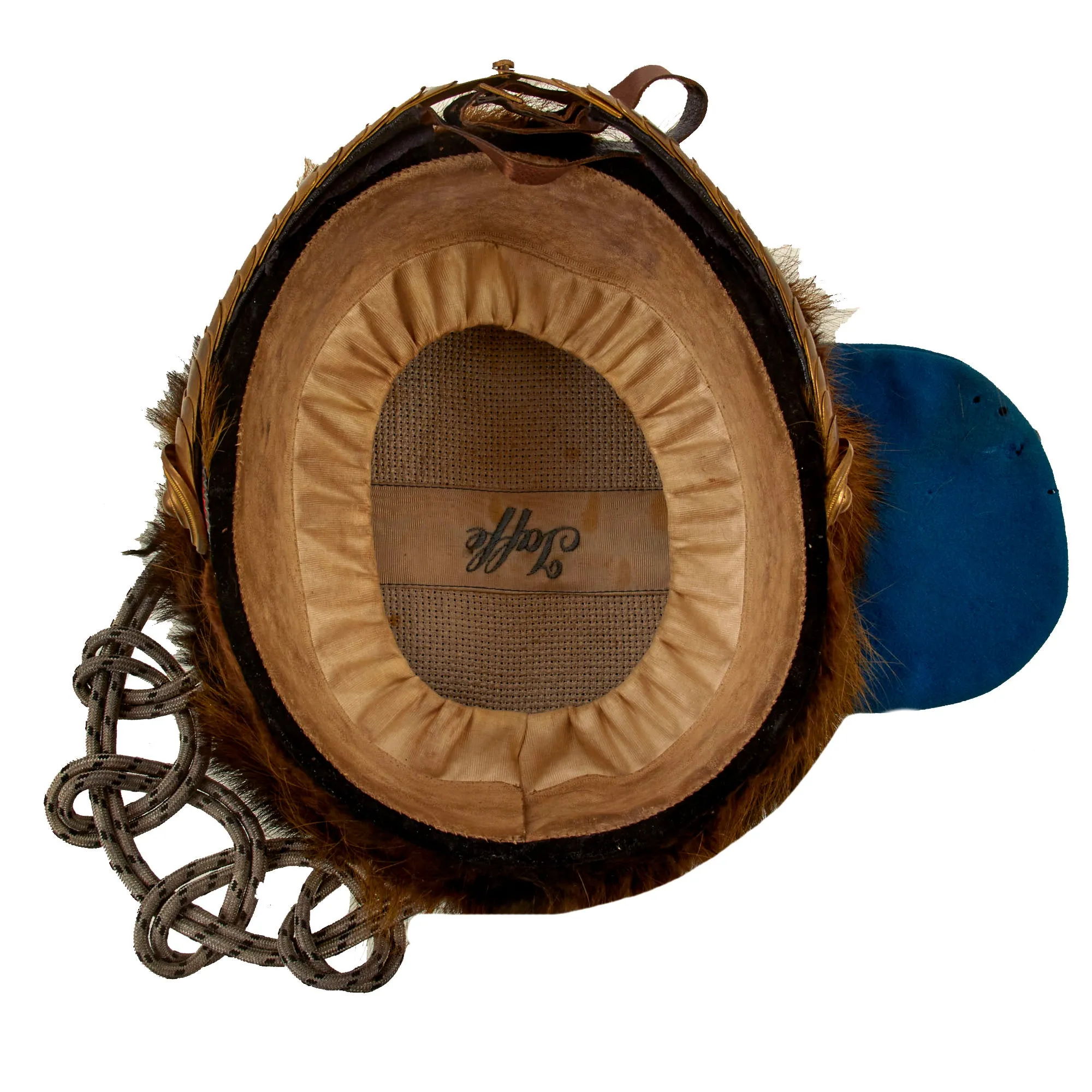
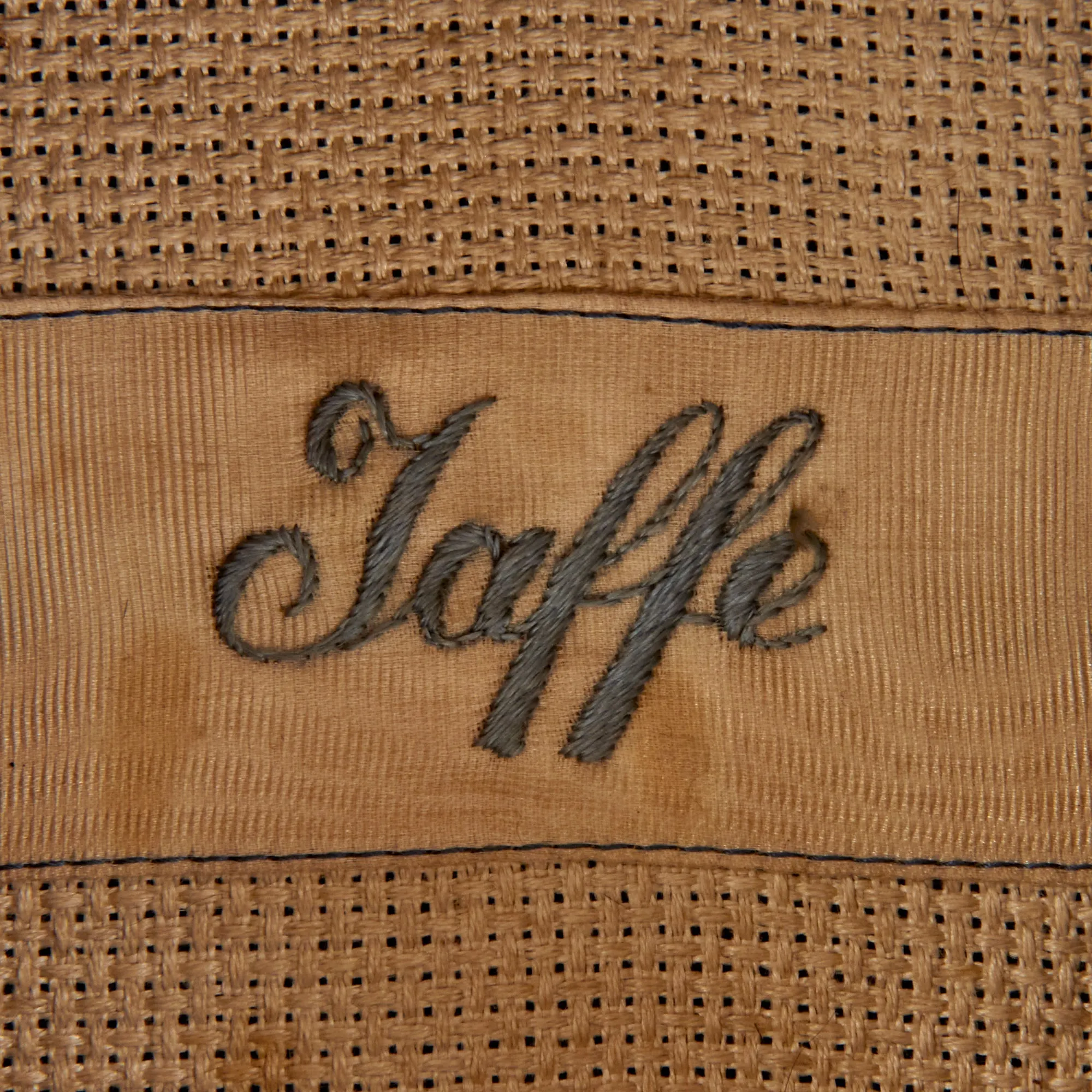
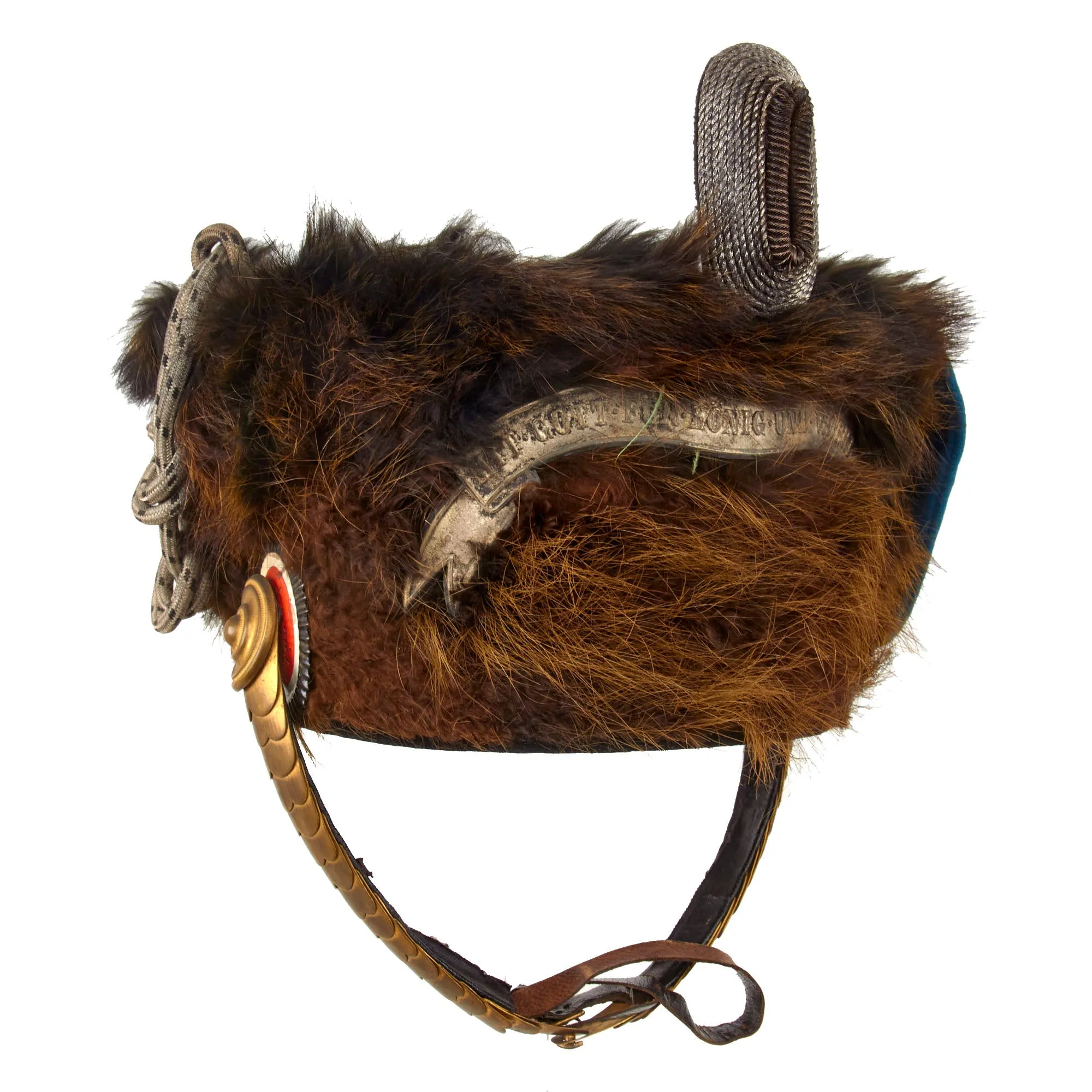

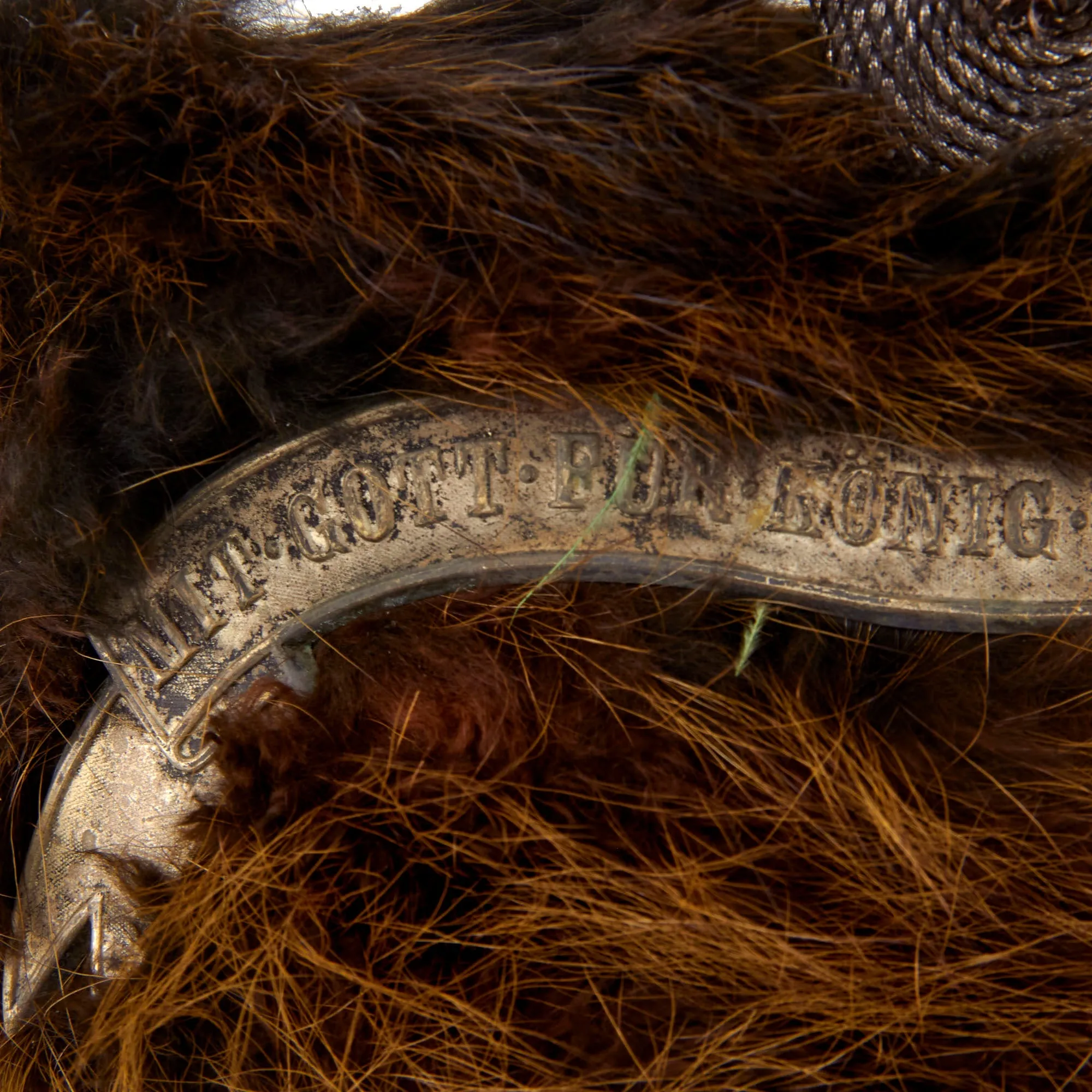
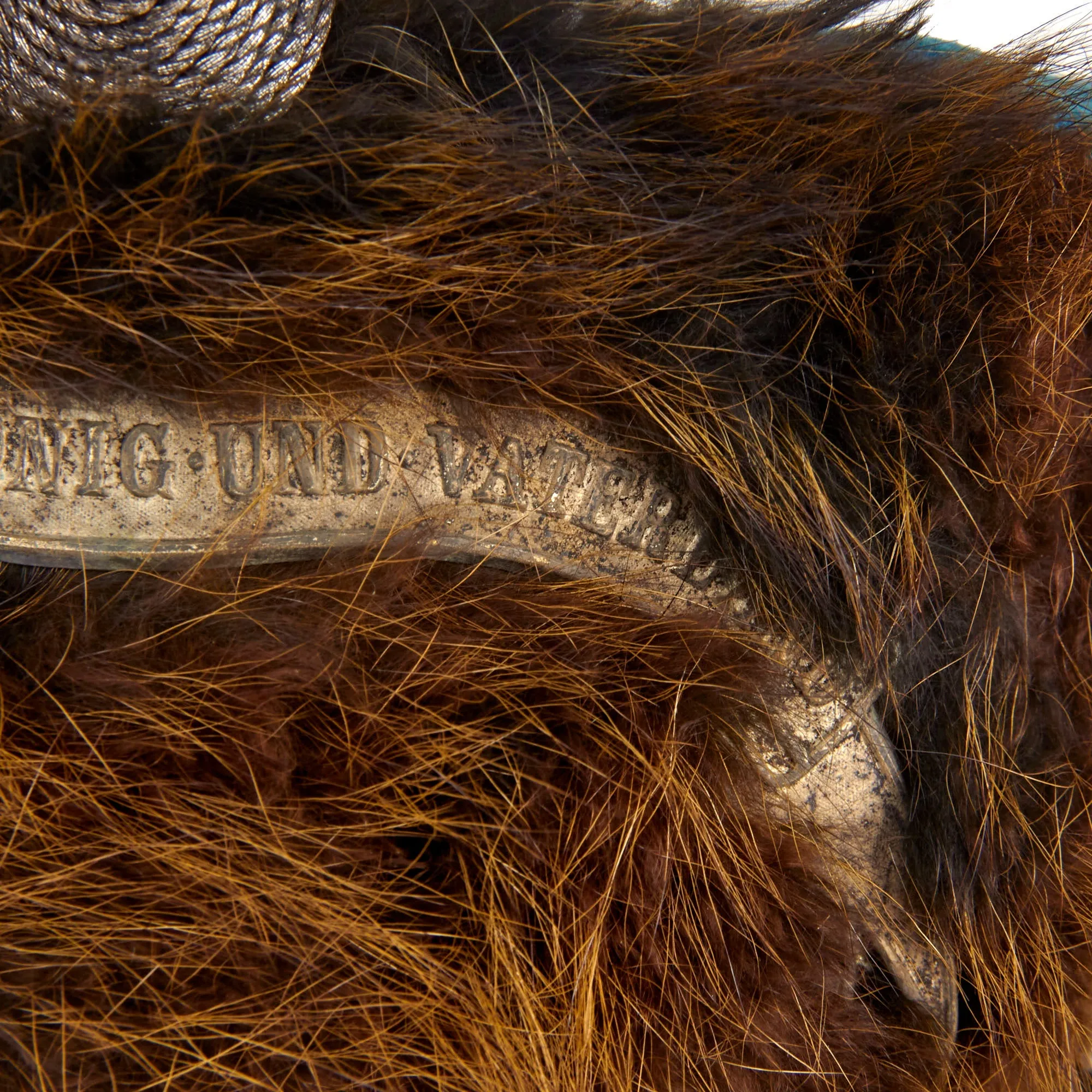
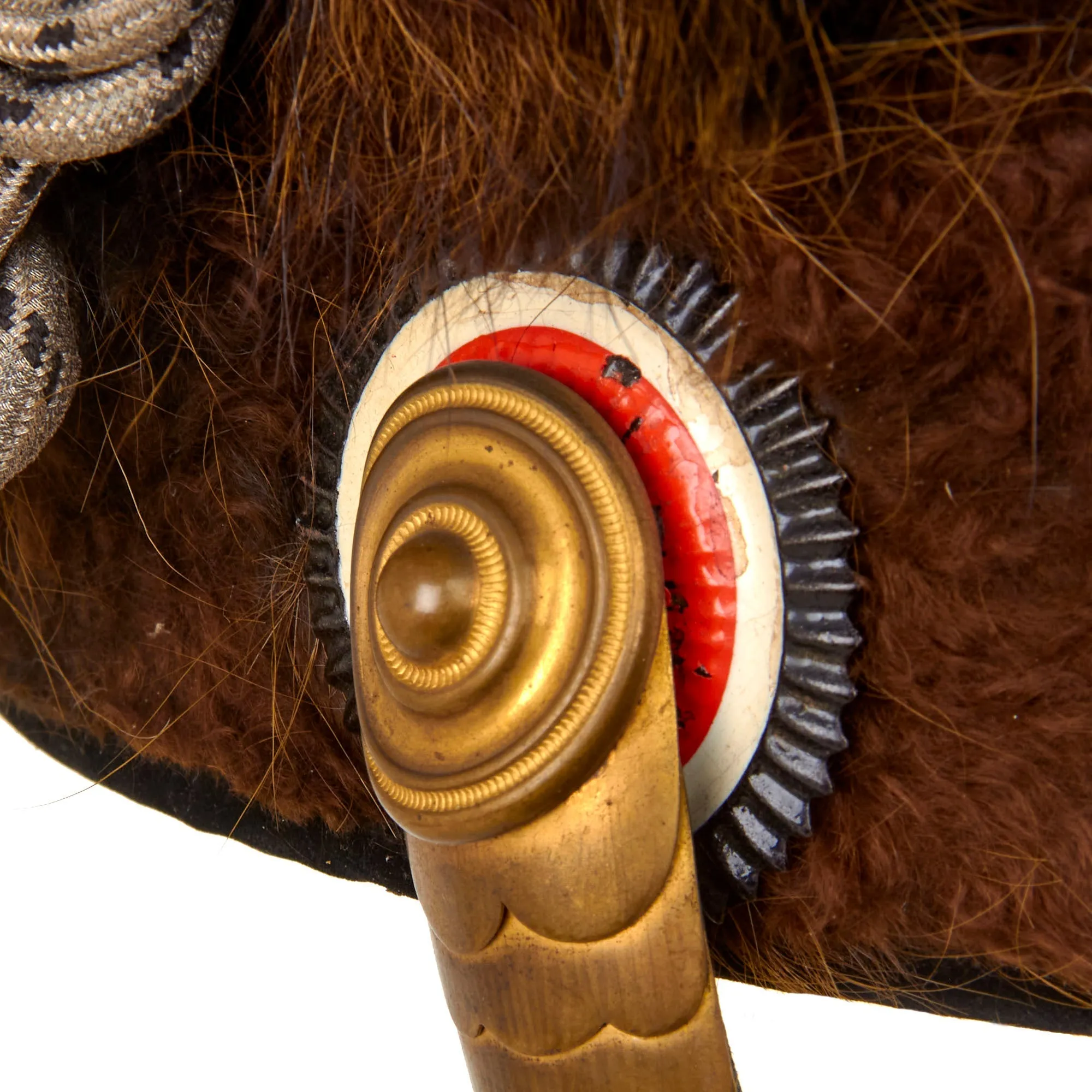
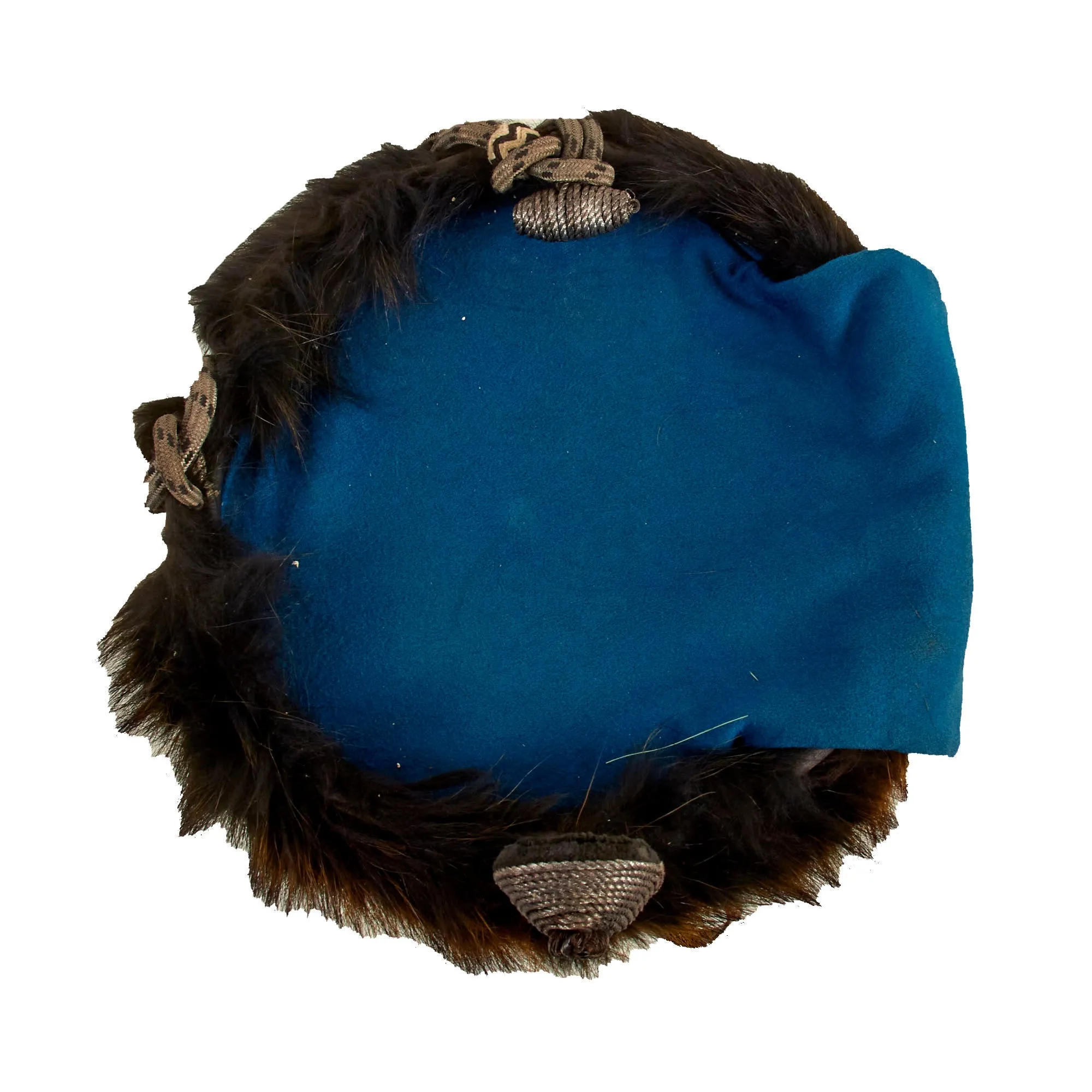

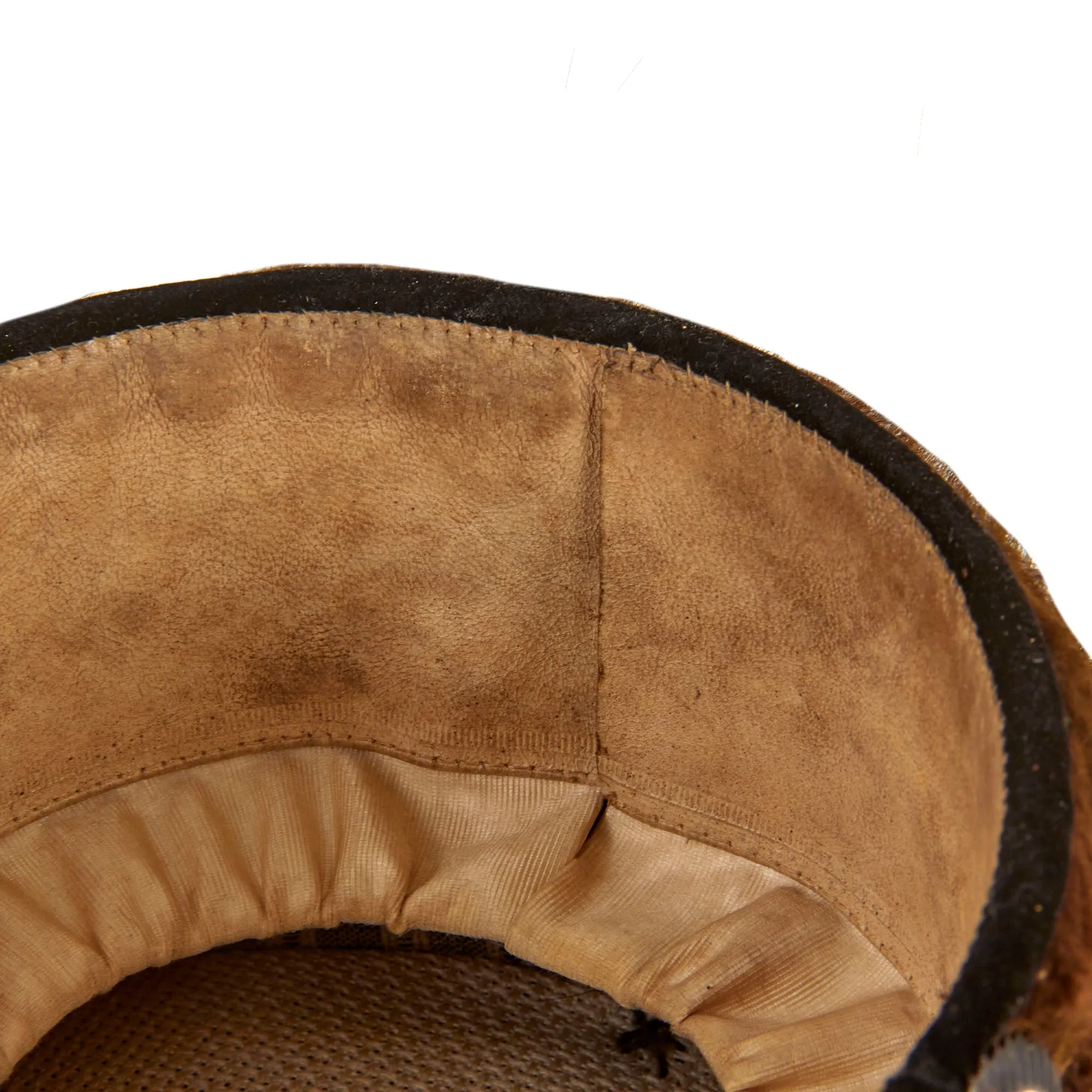
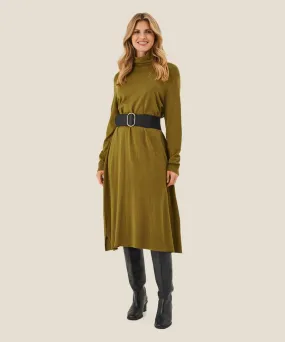
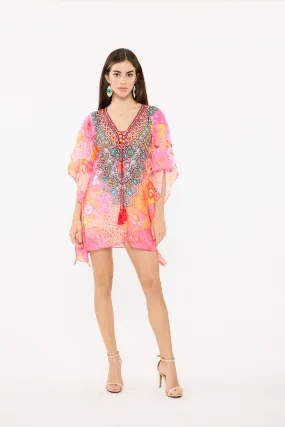

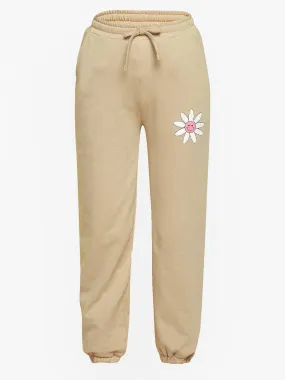
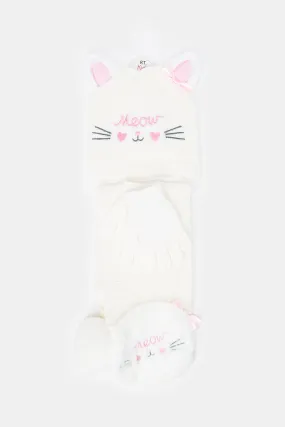
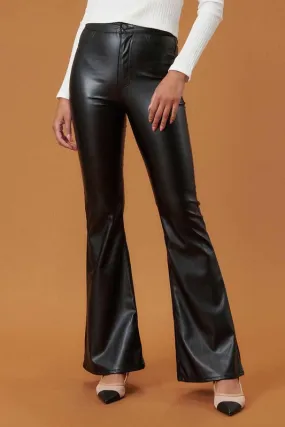

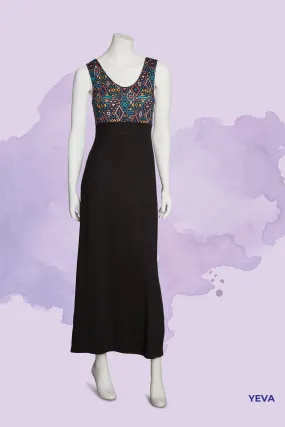
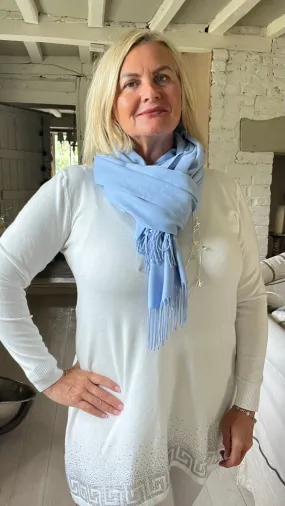
![Purple Multi Essential Top [NO RETURNS] Purple Multi Essential Top [NO RETURNS]](https://www.wintercosb.shop/image/purple-multi-essential-top-no-returns_6OYl4D_285x.webp)
